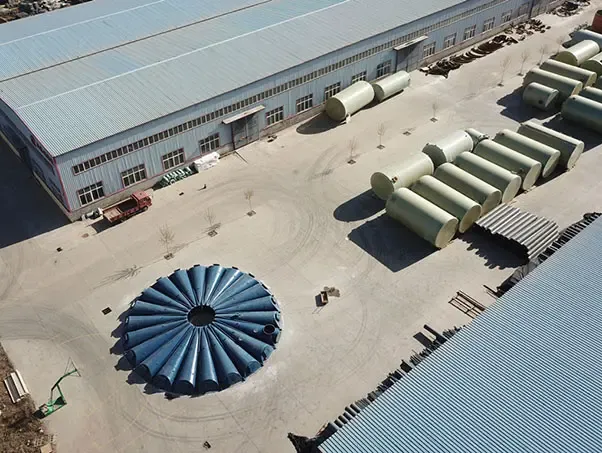
-
 Afrikaans
Afrikaans -
 Albanian
Albanian -
 Amharic
Amharic -
 Arabic
Arabic -
 Armenian
Armenian -
 Azerbaijani
Azerbaijani -
 Basque
Basque -
 Belarusian
Belarusian -
 Bengali
Bengali -
 Bosnian
Bosnian -
 Bulgarian
Bulgarian -
 Catalan
Catalan -
 Cebuano
Cebuano -
 China
China -
 China (Taiwan)
China (Taiwan) -
 Corsican
Corsican -
 Croatian
Croatian -
 Czech
Czech -
 Danish
Danish -
 Dutch
Dutch -
 English
English -
 Esperanto
Esperanto -
 Estonian
Estonian -
 Finnish
Finnish -
 French
French -
 Frisian
Frisian -
 Galician
Galician -
 Georgian
Georgian -
 German
German -
 Greek
Greek -
 Gujarati
Gujarati -
 Haitian Creole
Haitian Creole -
 hausa
hausa -
 hawaiian
hawaiian -
 Hebrew
Hebrew -
 Hindi
Hindi -
 Miao
Miao -
 Hungarian
Hungarian -
 Icelandic
Icelandic -
 igbo
igbo -
 Indonesian
Indonesian -
 irish
irish -
 Italian
Italian -
 Japanese
Japanese -
 Javanese
Javanese -
 Kannada
Kannada -
 kazakh
kazakh -
 Khmer
Khmer -
 Rwandese
Rwandese -
 Korean
Korean -
 Kurdish
Kurdish -
 Kyrgyz
Kyrgyz -
 Lao
Lao -
 Latin
Latin -
 Latvian
Latvian -
 Lithuanian
Lithuanian -
 Luxembourgish
Luxembourgish -
 Macedonian
Macedonian -
 Malgashi
Malgashi -
 Malay
Malay -
 Malayalam
Malayalam -
 Maltese
Maltese -
 Maori
Maori -
 Marathi
Marathi -
 Mongolian
Mongolian -
 Myanmar
Myanmar -
 Nepali
Nepali -
 Norwegian
Norwegian -
 Norwegian
Norwegian -
 Occitan
Occitan -
 Pashto
Pashto -
 Persian
Persian -
 Polish
Polish -
 Portuguese
Portuguese -
 Punjabi
Punjabi -
 Romanian
Romanian -
 Russian
Russian -
 Samoan
Samoan -
 Scottish Gaelic
Scottish Gaelic -
 Serbian
Serbian -
 Sesotho
Sesotho -
 Shona
Shona -
 Sindhi
Sindhi -
 Sinhala
Sinhala -
 Slovak
Slovak -
 Slovenian
Slovenian -
 Somali
Somali -
 Spanish
Spanish -
 Sundanese
Sundanese -
 Swahili
Swahili -
 Swedish
Swedish -
 Tagalog
Tagalog -
 Tajik
Tajik -
 Tamil
Tamil -
 Tatar
Tatar -
 Telugu
Telugu -
 Thai
Thai -
 Turkish
Turkish -
 Turkmen
Turkmen -
 Ukrainian
Ukrainian -
 Urdu
Urdu -
 Uighur
Uighur -
 Uzbek
Uzbek -
 Vietnamese
Vietnamese -
 Welsh
Welsh -
 Bantu
Bantu -
 Yiddish
Yiddish -
 Yoruba
Yoruba -
 Zulu
Zulu
frp boat
The Rise of FRP Boats Efficiency, Durability, and Environmental Impact
In recent years, the boating industry has witnessed a remarkable shift towards the use of Fiber Reinforced Plastic (FRP) in boat manufacturing. This innovative material offers a plethora of advantages over traditional materials such as wood and metal, making FRP boats a popular choice among recreational boaters, commercial operators, and fishing enthusiasts alike. In this article, we will explore the reasons behind the growing popularity of FRP boats, their advantages, and their impact on the environment.
What is FRP?
Fiber Reinforced Plastic (FRP) is a composite material made from a polymer matrix reinforced with fiber, typically glass or carbon. The combination of lightweight and strong fibers with a durable resin creates a material that is not only robust but also resistant to corrosion and degradation. This characteristic distinguishes FRP boats from traditional wooden or metal vessels, which can suffer from rot, rust, and structural failure over time.
Advantages of FRP Boats
1. Lightweight Construction The lightweight nature of FRP allows for enhanced maneuverability and speed on the water. Boaters benefit from the reduced weight, which translates into better fuel efficiency and lower operating costs. For recreational users, this means more time on the water with less hassle and expense.
2. Durability and Maintenance One of the most significant advantages of FRP boats is their durability. Unlike wooden boats that require regular maintenance to prevent rotting or metal boats that may corrode, FRP boats can withstand harsh marine environments. They are resistant to the effects of UV radiation, saltwater, and freshwater, leading to lower maintenance requirements and long-term cost savings.
frp boat

3. Design Flexibility FRP allows for versatile design possibilities, enabling manufacturers to create boats of various shapes and sizes that would be challenging or impossible with traditional materials. This design flexibility caters to a wide range of applications, from small fishing boats to luxury yachts.
4. Cost-Effectiveness Although the initial cost of an FRP boat may be higher than that of a wooden or metal counterpart, the long-term financial benefits often outweigh the upfront investment. Owners benefit from lower maintenance costs, fewer repairs, and longer lifespans, making FRP boats a wise economic choice.
Environmental Considerations
As environmental awareness grows, so does the importance of sustainable practices in manufacturing. FRP boats have a relatively low carbon footprint compared to traditional options. The production processes for FRP materials are advancing, with a focus on using recycled fibers and bio-resins that further reduce their ecological impact. Additionally, the longevity of FRP boats means they do not need to be replaced as frequently, contributing to decreased waste and resource consumption in the long run.
Conclusion
The rise of FRP boats in the marine industry marks a significant step forward in boating technology. Their lightweight, durable, and versatile nature makes them a practical choice for various marine applications. As manufacturers continue to innovate and improve the sustainability of FRP materials, the benefits of FRP boats are likely to expand further. Whether for recreation, fishing, or commercial use, FRP boats represent a modern solution that aligns with the needs of today's environmentally conscious society. The future of boating seems to be on an upward trend, with FRP boats leading the charge into a new era of efficiency and sustainability.
Latest news
-
Exploring the Benefits of Top Hammer Drifter Rods for Enhanced Drilling PerformanceNewsJun.10,2025
-
High-Precision Fiberglass Winding Machine for GRP/FRP Pipe Production – Reliable & Efficient SolutionsNewsJun.10,2025
-
FRP Pipes & Fittings for Shipbuilding - Corrosion-Resistant & LightweightNewsJun.09,2025
-
Premium FRP Flooring Solutions Durable & Slip-ResistantNewsJun.09,2025
-
Premium Fiberglass Rectangular Tanks Durable & Lightweight SolutionNewsJun.09,2025
-
Tapered Drill String Design Guide Durable Performance & UsesNewsJun.09,2025









